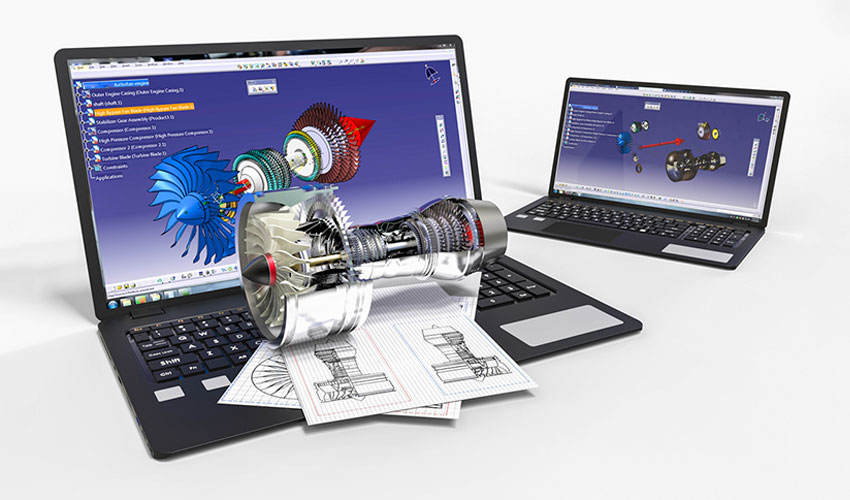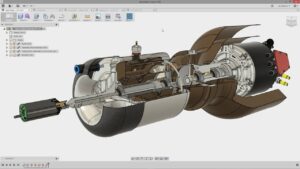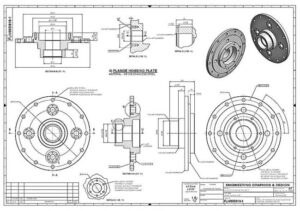Computer-Aided Design (CAD) modeling has revolutionized the world of design, enabling professionals from various industries to create intricate and precise digital representations of their ideas. Whether it's designing a sleek architectural structure, developing complex mechanical parts, or crafting stunning visual effects for movies, CAD modeling has become an essential tool for transforming concepts into tangible reality. In this article, we delve into the realm of CAD modeling, exploring its significance, benefits, and the skills required to excel in this art form.
What is CAD Modeling?
CAD modeling refers to the process of using computer software to create three-dimensional (3D) digital models of objects, products, or environments. It involves the use of specialized CAD software programs, such as AutoCAD, SolidWorks, or Blender, to design, modify, and simulate objects in a virtual space. CAD models can range from simple geometrical shapes to highly intricate, lifelike representations, and serve as blueprints for manufacturing, visualization, analysis, and more.
Significance and Benefits of CAD Modeling:
- Visualization and Communication: CAD models provide a visual representation of a design idea, enabling designers to explore and communicate their concepts effectively. Clients, stakeholders, and team members can easily grasp the intended design, leading to better collaboration and decision-making.
- Accuracy and Precision: CAD modeling allows for precise measurement and placement of elements, ensuring accuracy in design specifications. This level of precision minimizes errors and reduces the likelihood of costly mistakes during the manufacturing or construction process.
- Iterative Design and Rapid Prototyping: CAD software facilitates easy modification and iteration of designs, empowering designers to explore multiple concepts and refine them quickly. Rapid prototyping using 3D printers further accelerates the design validation process, saving time and resources.
- Design Validation and Analysis: CAD models enable engineers and designers to simulate and analyze various aspects of their designs, such as structural integrity, fluid dynamics, and stress analysis. This helps identify potential flaws or optimizations early in the design phase, reducing the risk of failure in the final product.
Skills Required for CAD Modeling:
- Proficiency in CAD Software: Familiarity with industry-standard CAD software, such as AutoCAD, SolidWorks, CATIA, or Fusion 360, is essential. Mastery of software-specific tools, commands, and features empowers designers to efficiently create, modify, and manipulate 3D models.
- Technical Drawing Skills: Understanding technical drawing principles, including orthographic projections, isometric views, and dimensioning, helps translate real-world objects into accurate CAD models. Knowledge of drafting standards and conventions ensures compatibility with manufacturing processes.
- Spatial Visualization: The ability to mentally visualize 3D objects and their relationships is crucial in CAD modeling. Practice and training can enhance spatial awareness and aid in constructing complex assemblies and intricate geometries.
- Problem-Solving and Analytical Thinking: CAD modeling often involves overcoming design challenges and optimizing solutions. Strong problem-solving and analytical skills enable designers to find creative solutions, considering factors like material constraints, manufacturing limitations, and functional requirements.
- Continuous Learning and Adaptability: Given the rapidly evolving nature of CAD software and industry practices, a mindset of continuous learning is essential. Staying updated with the latest software features, techniques, and emerging technologies ensures designers remain competitive and adaptable.
Conclusion:
CAD modeling has become an indispensable tool for designers across industries, offering a powerful means to transform ideas into reality. With its ability to visualize, simulate, and analyze designs, CAD modeling streamlines the design process, enhances communication, and reduces costly errors. By acquiring the necessary software skills, technical know-how, and problem-solving abilities, aspiring CAD modelers can unlock endless creative possibilities and contribute to the advancement of various fields. Embrace the art of CAD modeling, and let your imagination soar in the virtual realm of design.
Reach out to us today and learn about our CAD modeling capabilities that meet your product needs.



